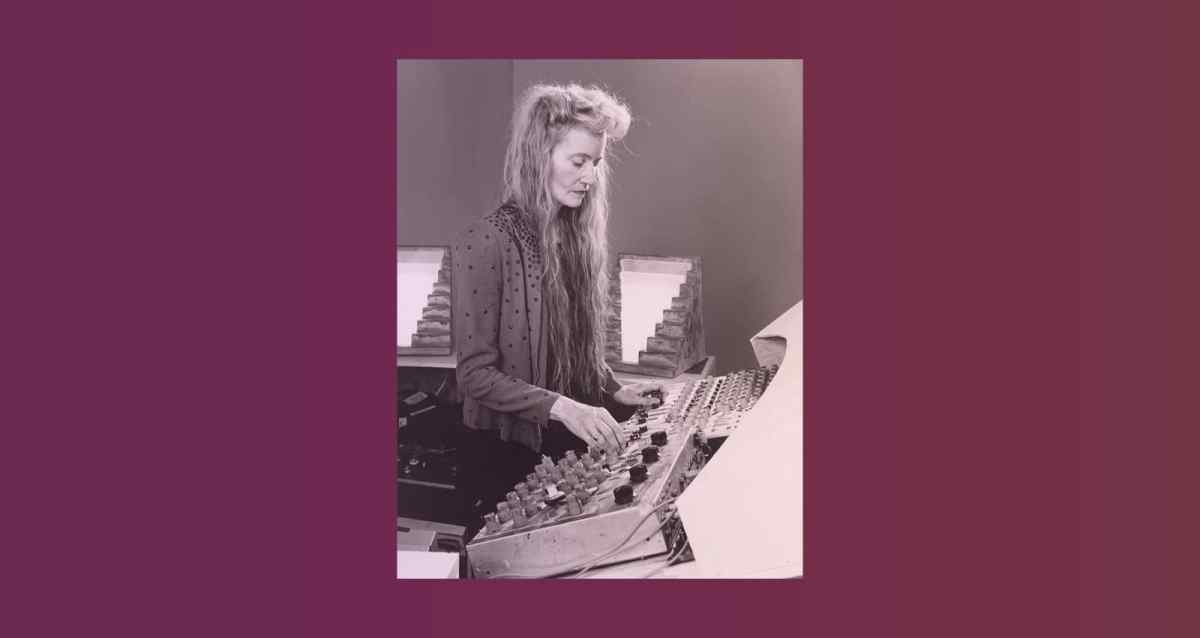Magic Eye images, or autostereograms, are those illusory images you used to see in books and magazines back in the ‘90s. If looked at in the right way or for the right amount of time, parts of the image would appear on a separate plane and acquire a kind of three-dimensionality produced entirely within the viewer’s own perception. Maryanne Amacher’s “Sound Characters (Making the Third Ear),” which I just listened to for the first time, is something of a Magic Eye.
After being sent a link to the album in full, I sit on a chair in the so-called “sweet spot” of my monitors, where the stereo perception is balanced in each ear at a focal point within the room, and pressed play. For roughly two minutes, there’s a cascading, repeated sine tone, or more likely two tones simultaneously. The sound’s presence in your ears trumps all sense of volume, and the air itself seems to feel saturated with a sort of aural humidity. There is nothing pleasant about it, but it affirms its own physicality in a way that is almost impossible to replicate acoustically, except perhaps for whispering gallery of New York’s central station, or St Paul’s cathedral in London. There’s a moment where the “third ear,” is made—the feeling of an effect or tone separate from those emitted by each speaker is being generated somewhere inside each ear, or perhaps within my head.
Maryanne Amacher, “Sound Characters (Making the Third Ear)”; 1999.
This effect is distinctly physical, more so than the Magic Eye, in that it involves sound—the vibration of air molecules and of the bones in your ears. I turn my head sideways and lose it on the left side, before feeling unbalanced and turning it back. Almost a sonic manifestation of having water stuck in your ear after swimming in the sea.
The tones eventually fade into their polar opposite—a cavernous, sometimes hellish, reverberation. I turn up the volume on my mixer, the ultra-low hertz frequency now manifest in the movement of the speaker cones rather than in my perception of the air, although the unmistakable sensation of sound occupying a room remains in what seem like the quietest passages—a narcotically pitched-down version of that sensation you’d sometimes get in a room with an old untuned TV switched on somewhere. I’m reminded of how it feels to stand within a club system like Berghain’s Funktion-One stacks, which surround the concrete main floor, and are best experienced at some of the more experimental concerts they sometimes host there earlier in the night. It’s that lack of directionality, of encompassing sound that is possible only in my sweet spot, and which can’t be achieved using headphones.
It’s difficult to know what to call each part of the record; they’re not movements, definitely not songs, not tracks in a traditional sense. They could be called “passages,” since they lead you up and down the frequency spectrum in turn, alter your perception of both your immediate environment, be it the room or your position within it, and allow your mind to wander. Only short passages produce the third ear effect—it is any case exhausting, not particularly pleasant, and assumes a level of sound that sits just below the painful. In the same way that a Magic Eye is difficult to stare at for an extended amount of time, the generation of sound within your own ears is taxing.
Other passages have the effect of limitless strings. I find myself trying to pick apart their composition: square waves of different pitches, low-frequency oscillators that modulate individual dynamics and produce a slow pulse. Unlike the third ear effect, which commands my whole attention, I begin to make associations as I listen here. After the depth of the quieter low-frequency passages, where sudden variations make me jump at times in my darkened room, the brightness of these waves are Edenic. I think about Hieronymous Bosch’s The Garden of Earthly Delights—both its figurative depiction of levels and their inhabitation, and its use of depth, where what’s most immediate for the viewer, life on earth, is foregrounded, with Hell and Heaven manifest in the distance. The oscillations also remind me of a recurring dream I used to have but always found difficult to put into words—always a shifting visual texture like film grain, static, or impenetrably heavy rain, and a drone that would slowly change in intensity. That too, was a sound created within one’s own body, although in a different way.

That “Sound Characters” only produces its unusual effect when listened to through speakers is something that many of our modern listening practices might well miss. There’s a paradox underlying the experience—in order to really feel the sound within, one requires physical distance from its source. It also requires an almost ritualistic mode of listening—it must have been slightly disconcerting to look across the street through my apartment windows, and see me sat on a chair in the middle of the room, five feet from two large speakers, turning my head in different directions. Ritual is what it takes to conjure this music’s strange ghost. ¶


Comments are closed.